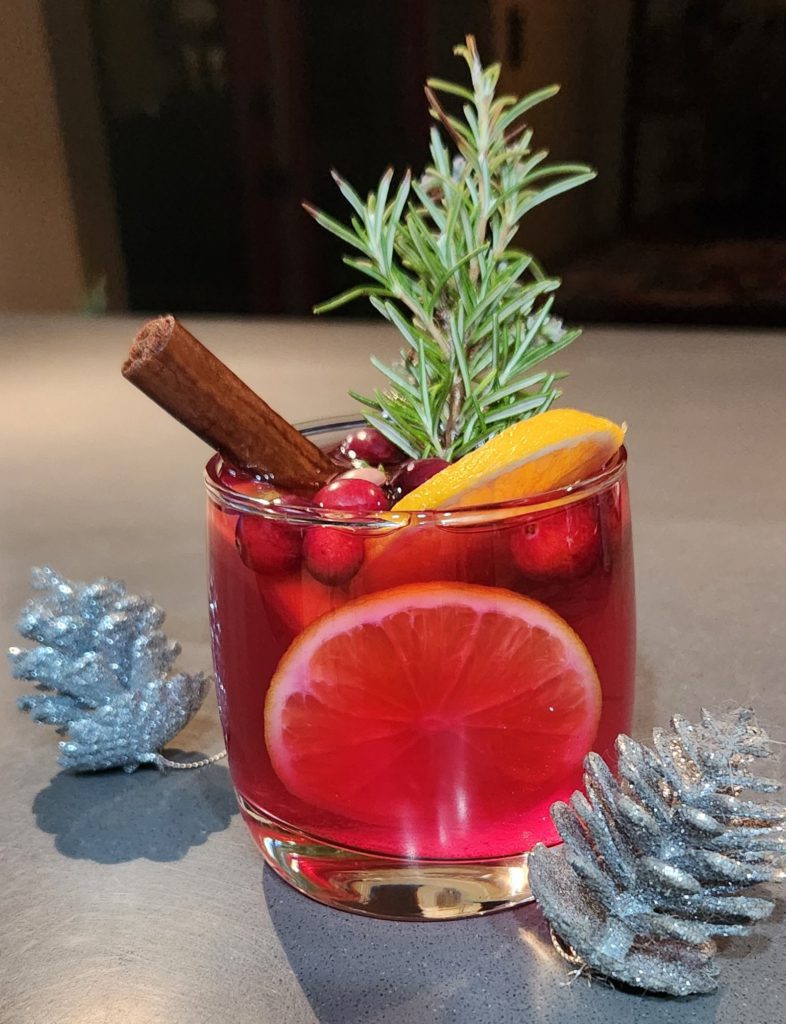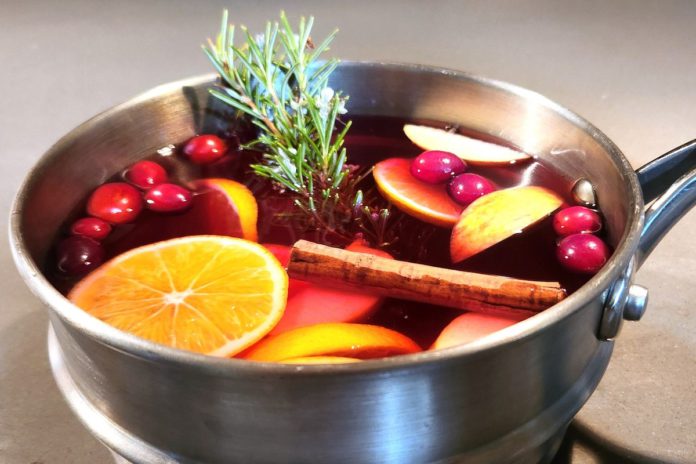There have been many attempts throughout history, long before refrigeration, to extend the longevity of food and drinks. Many of these preserving processes created items that are still enjoyed today. The use of salt created bacon, smoking produced smoked salmon, and fermentation led to sauerkraut, all of which are now commonly consumed around the world. The process of drying yields sun-dried tomatoes, adding sugar gives us dried fruits, and storing food in oils produced marinated artichokes, all popular ingredients in contemporary cooking. Using spices is another ancient preservation method. This process gave us mulled wine which has become a tasty holiday tradition in many western countries.
Mulled wine is a red wine infused with different combinations of mulling spices and is served warm or hot. Mulling spices include clove, nutmeg, cinnamon, star anise, allspice, cardamom, and vanilla pod, all which are popular spices in other holiday recipes. A single type of fruit or a combination of fruits such as cranberries, pears, apples, grapefruit, pomegranates and oranges are common non-spice ingredients. Many recipes finish by adding a festive garnish to the glass right before the warm wine is served. These could include an orange or lemon twist, a cinnamon stick or a rosemary sprig.

The names for mulled wine vary throughout Europe and South America but can usually be translated into English as cooked wine, smoldered wine, hot wine or boiled wine. Traditional styles and alcohol levels of mulled wine vary from country to country. Mulled wine with higher levels of alcohol can be found in the United Kingdom which typically adds brandy or fortified wine; in Poland which incorporates vodka and in Brazil where cachaca is mixed in. Countries such as Italy and the U.S. produce mulled wines with lower alcohol levels due to the use of higher temperatures and longer simmering durations to infuse the spices into the wine.
Traditional mulled wine recipes call for red wine as the main ingredient. The wine does not have to be expensive since many of the characteristics that people enjoy in middle and higher priced wines will be negated by the cooking process and the addition of potent spices. The best wine varietals to use in mulled wine recipes are dry and full-bodied Cabernet Sauvignon, Zinfandel, Grenache or Syrah. Full-bodied wines will maintain their taste with the addition of different flavors and drier wines will ensure the mulled wine does not get too sweet with the addition of different fruits. Experimenting with other red wines such as Pinot Noir, Malbec, Chiante, Shiraz, red wine blends, and even rosés can be fun and tasty.
Making non-alcoholic mulled wine can be a way to include non-drinking friends and family members in a warm glass of holiday cheer. Cranberry, red grape, pomegranate, apple and blueberry juices can substitute for red wine. The same spices, fruits, and garnishes used in mulled wine recipes can be incorporated into a non-alcoholic recipe. Non-alcoholic Kombucha also makes a flavorful base. Combination flavors such as cranberry ginger spice, ginger berry, autumn apple and elderberry juniper already have some holiday flavors present. Single flavors such as blackberry, pomegranate, cranberry and blueberry are also tasty options. Kombucha is so flavorful that it is also being incorporated into red wine mulled wine recipes.
Mulled wines are made by combining red wine with spices and fruits, then heating the mixture up to a temperature of around 150°F. Alcohol evaporates at 172°F so the mulled wine should not be allowed to boil at any point. It can simmer from 20 minutes to a few hours depending on how infused you want the spice flavors to be. Mulled wine can be cooked on a stove top in a saucepan or Dutch oven. It can also be cooked in a slow cooker which is a foolproof way to prevent boiling. Whole spices can be added directly to the wine or placed in a spice bag. Ground spices should be stirred in well. The finished wine can be ladled directly into a garnished heat-resistant glass or ceramic cup.
Recipes for mulled wine can be found on the internet, on packages of mulling spices or passed down from family members. It’s easy to make, so you can be sure the mulled wine will look, smell, and taste great. This holiday season, sharing tasty mulled wine with family and friends can warm the hands and stomach as well as the heart.
Daniel O’Donnell is the co-owner and operator of an organic landscape design/build company in Fremont. www.Chrysalis-Gardens.com




